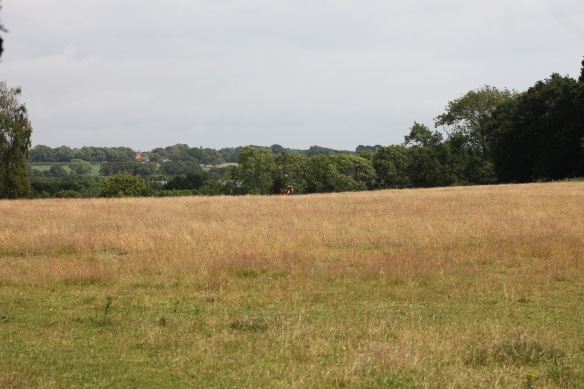CLICK ON IMAGES TO ENLARGE. REPEAT IF REQUIRED.
I am beginning to find myself reminded by readers, of earlier posts that may have something to contribute to ‘A Knight’s Tale’. One of these was ‘Early Entertainment’, which provided quite rich material that I used in today’s update. Please keep the ideas flowing – I really can’t remember everything I’ve written.
Our general garden maintenance continued today on both sides of a trip to Efford Recycling Centre where we dumped more rotting IKEA wardrobe sections that have served a useful purpose up to now. we went on for a drive.
Standing beside a roundabout on the A337 out of Lymington we have often noticed three stag-headed figures standing either side of a five-barred gate. We knew that these heralded the entrance to
the site of an Iron Age Hill Fort.
Parking on a roundabout on a main road is not a good idea, so we had never stopped before. This time Jackie drove on a little way and parked in a side street from whence we walked back to investigate.
A gentleman with a dog was passing the sculptures
and walked on around a gentle incline.
Having read how far the walk to the top would be, Jackie opted to return to the car and let me check the lie of the land.
Or maybe the reason was the sight of a colony of descendants of Iron Age rabbits romping on the hillside.
In the event, the steeply undulating nature of the paths riddled with tree roots suggested that this had been a good idea.
On the way up, a sign informed us that young people had transformed a disused sand quarry into a sledge run. The area is apparently packed with tobogganists whenever there is sufficient snow.
What was once farmland around the fort is now densely wooded. Through the trees I glimpsed the roof of what I later discovered to be
Not far from there lay a shallow set of steps leading to

a broad open plateau that had been the centre of the fort.
This was grazed by a cow and her calf.
The logs just visible in the steps picture are designed to prevent people parking on the hallowed ground. There is a car park alongside.
I was informed how to reach that from the road by another gentleman walking his dog.
Taking an easy route down the hill I watched a crow sweep across the grass tops,
and banged my head on a low branch.
Quite sensibly, Jackie declined to investigate the car park, and we went home.
Wikipedia has an informative entry on this historic site: https://en.wikipedia.org/wiki/Buckland_Rings
This evening we dined on Jackie’s spicy penne pasta arrabbiata with which she drank Hoegaarden and I drank Parra Alta Malbec 2016.























